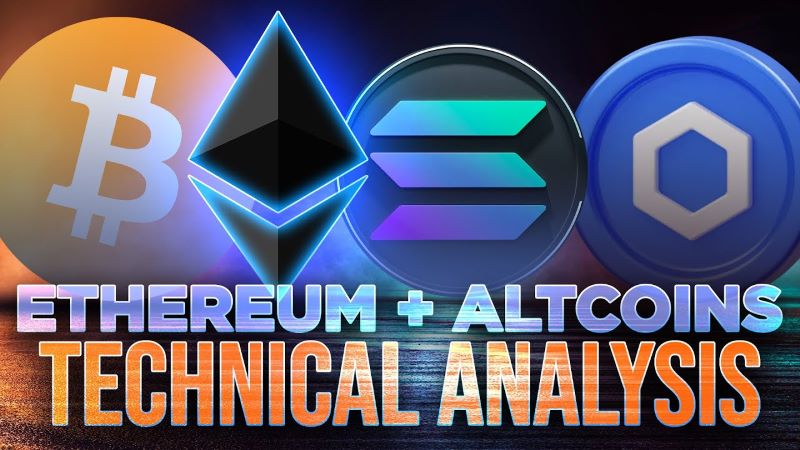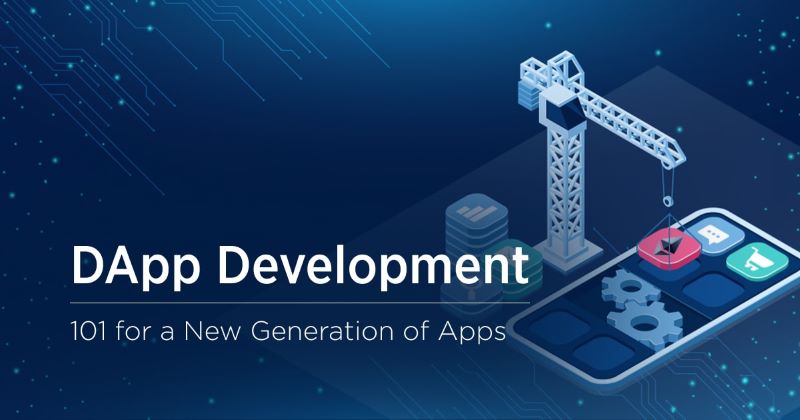Cryptocurrency analysis can feel like untangling a complex web, but here, we slice through the confusion, laying bare the essentials to spot trends that could line your pockets. You don’t need a finance degree to decode the signs. Instead, grasp the beating heart of the market: how value swells in real-time and why prices zigzag like lightning. We dive into blockchain’s guts, revealing the cogs that drive token growth and performance. Sharpen your trading edge with advanced strategies and shake hands with the future, exploring disruptive tech shaking the crypto world. Get ready to unlock profitable market insights that could be your ticket to success.
Understanding the Crypto Market Landscape
Deciphering Market Capitalization and Trading Volume
To grasp the size of a crypto, look at its market cap. It shows a coin’s value. If Bitcoin has a huge market cap, it means it’s worth a lot. To find it, multiply the coin’s price by how many are out there. This helps you see which coins are big players.
Now, let’s chat about trading volume. It’s how much of a coin people buy and sell in a day. High volume means lots of interest in a coin. It often means the price could change fast. So, if tons of Ethereum trades daily, that’s high volume.
Identifying the Pulse of Price Fluctuation Patterns
Price moves up and down all the time, like a yo-yo. This matters a lot. If you watch the patterns, you can guess where prices might go. Look for trends. Is the price jumping up? Maybe more people want that coin. If it drops, some may be selling off.
Patterns can also show you if something big is happening. Maybe there’s news or a change in the crypto rules. All these things shake up the prices.
By keeping an eye on these moves, you can bet better on what might happen next. It’s like learning the rhythm of a song. After a while, you may guess the next note. But remember, it’s never sure. There’s always a chance things won’t go as planned.
In-Depth Blockchain Technology and Token Analysis
Exploring Blockchain Impact and Token Ecosystems
Blockchain is like a digital ledger. Think of it like a record book. But instead of paper, it’s online. Everyone can see it, making things open and honest. It’s used for more than just Bitcoin. Many kinds of digital money, called tokens, use it too. It makes sure people can trust deals they make with these tokens.
Now, let’s talk about how it all works. Picture a chain. Each link in the chain is a bunch of transactions. When new ones come, they form a new link. It keeps growing that way. This chain lets us track tokens from when they start to the latest use. Because of this, we have trust in the system. We know it’s fair.
These tokens are part of what we call an ecosystem. It’s like a little world for digital money. In this world, tokens have jobs. Some tokens let us play games or enter clubs online. Others help us buy things or use special services. By doing a job, the tokens have a purpose. That’s what makes them valuable.
But how do we know what they’re worth? We check the market. It shows what people are willing to pay for these tokens. It’s like when kids trade cards. If a card is rare and lots of kids want it, its value goes up. It’s the same with these tokens.
Tokens get their power from smart contracts. These are like rules written in code. They say what can or can’t happen in the token world. If the rules say you can trade a token, you can. If the rules say you can’t, then you can’t. It’s all automatic. No one can cheat the system.
Ethereum and Altcoins: Growth and Performance Metrics
Ethereum is special. It’s not just a token. It’s a whole world where you can make your own token. It lets people write smart contracts. These contracts are the rules of the token world we talked about.
Altcoins are like other teams in the game. They’re not Bitcoin, but they have their own sparkle. There are lots of them, and they do different things. Some are fast, some are for saving the earth, and some keep things extra private.
To see how these tokens are doing, we look at numbers called performance metrics. Think of it like a scoreboard at a sports game. It shows who’s winning and who’s scoring the most. In the token world, we look at things like how much it’s worth or how often it’s used. This helps us understand which tokens are stars and which ones are not.
A big thing we look at is growth. It means are more people using it? Is it being used for new things? We want to know if it’s spreading. Like when a new song comes on the radio, and soon everyone’s humming it. That’s good growth.
To wrap it up, blockchain makes digital money safe and fair. Tokens are like players, each with their own part to play. Markets show us their worth. Ethereum lets us build new things. And by watching the scores, we learn about growth and success. All together, it’s an exciting game to watch and be part of!
Advanced Crypto Trading Strategies
Leveraging Crypto Trading Indicators and Historical Data
To win in crypto, you need the best tools. Think of crypto trading indicators as your hammer and nails. You can’t build a house without them. These indicators show market trends. They predict where the price could go. One example is the ‘moving average’. This tells us the average price over time. It helps us spot a trend. Is the price mostly going up or going down?
We also dig into historical price data. Past prices can teach us patterns. Let’s say Bitcoin dropped every April for three years. We factor this in our April trades. But remember, past events don’t always repeat. They just give us clues.
Price isn’t the only thing we check. We look at trading volume too. High trading volume means a lot of action. It often shows strong interest in a coin. This could mean a big price move is coming. Low volume might warn us of weak interest.
Historical data and trading indicators are like a map. They guide us through the twisty paths of the crypto world.
Sentiment Analysis and Liquidity Assessment Techniques
Sentiment is the heart of the market. It’s how traders feel about a coin. Are people talking good or bad about it? We check social media and news for this. Good news can drive prices up. Bad news can do the opposite.
Liquidity is about how easy you can buy or sell without affecting the price. High liquidity means you can trade quickly. Low liquidity can mean trouble. You might not find a buyer or seller. Or, you could affect the price too much when you trade.
We use sentiment analysis to get the mood of the market. We assess liquidity to be ready to move fast. Both are key to making smart moves in crypto.
Together, these strategies give us an edge. They help cut through the noise. They shine light on the best paths to take. With them, we’re better prepared to tackle the crypto jungle.
Emerging Technologies and Market Trends
DeFi Sector Dynamics and Cross-chain Interoperability
Let’s talk DeFi, short for decentralized finance. This is a game-changer, folks. It shifts control from big banks to our hands, using blockchain. You earn money, borrow, lend, and invest, all without middlemen. With DeFi, you are the boss!
Now, why does cross-chain stuff matter? Imagine two blockchains talking to each other. This is big! It lets you share info and use services across different networks. It’s like building bridges between islands. More bridges, more ways to travel. This means you can do more with your crypto.
DeFi is growing fast. Why? It’s open to everyone and runs all day and all night. Think of DeFi as a huge 24/7 money fair where everyone is welcome. Yet, it’s not just fun and games. There are risks, like hacks and scams. So stay sharp!
Cross-chain tech brings networks together. It’s like making friends in different places. You can be in one place and play games or trade in another, without ever leaving home. This tech can help us all get along in the crypto world.
Scrutinizing NFT Market Trends and DApp Developments
Now, let’s dive into NFTs — or non-fungible tokens. Everyone’s talking about them! They’re like digital collectibles – no two are alike. NFTs can be art, music, anything! They prove you own something unique on the blockchain.
NFTs change how we think about owning stuff. Online. Buying an NFT means you get a special token that says “I own this.” And it’s all yours, protected on the blockchain.
DApps, short for decentralized applications, are the next part of this talk. Picture regular apps, but they run on a blockchain. This means no single person calls the shots. DApps can be games, markets, or social networks. And you guessed it, they work well with DeFi and NFTs.
NFT market trends? One day they’re up, the next they’re down. It’s wild! Lots of folks are buying. But look before you leap. And remember, each NFT is its own thing; they’re not all the same.
DApp development is booming, too. More DApps means you have more choices on what to do with your crypto. It can get confusing, though. Lots to learn. But hey, that’s half the fun!
So, why care about NFT and DApp trends? They’re the frontier of where tech meets art and money. Keep your eyes on them, and you’ll see where crypto’s headed next.
With these emerging techs, the crypto world stays exciting. DeFi gives us control. Cross-chain lets us work together. NFTs let us own cool stuff. And DApps keep things fresh. All these show that crypto is more than just money—it’s a whole new way to do things.
In this post, we’ve dug into the crypto market and what makes it tick. We first unpacked market cap and trading volume. Next, we caught the beat of crypto prices and why they swing. Then, we peeled back the layers of blockchain, checked out Ethereum and other coins, and saw how they’re doing. We also tackled solid crypto trading moves, using smart tools and past data. We saw how traders think and choose where to put their money. Lastly, we scoped out the future with DeFi and NFTs, plus fresh tech shaking things up.
My final thought: Stay sharp and keep learning. Crypto’s fast-paced world waits for no one. Stick with it, and you’ll get the whole picture. Use what we’ve covered, and you’re set to make smarter moves in this exciting market.
Q&A :
What is cryptocurrency analysis?
Cryptocurrency analysis involves evaluating various aspects of digital currencies such as market trends, trading volumes, historical prices, and news events. It typically comprises two main methods: fundamental analysis, which examines the intrinsic value of a cryptocurrency based on news and financial indicators, and technical analysis, which looks at statistical trends gathered from trading activity.
How do you perform a technical analysis of cryptocurrencies?
Technical analysis of cryptocurrencies is performed by analyzing statistical trends from trading activity, including price movement and volume. This method often employs the use of charts and various technical indicators like moving averages, RSI (Relative Strength Index), and Fibonacci retracement levels to identify potential price movement and market trends. Traders use this analysis to make predictions and inform their trading decisions.
What is the importance of fundamental analysis in cryptocurrency trading?
Fundamental analysis is important in cryptocurrency trading as it allows investors to gauge the intrinsic value of a cryptocurrency beyond its current trading price. It includes examining a digital asset’s utility, developer activity, technological advancements, regulatory news, and its network’s economic model. This information helps traders predict long-term profitability and sustainability of the cryptocurrency.
Can cryptocurrency analysis predict the market?
While cryptocurrency analysis can provide insights and potential trends, it cannot predict the market with complete accuracy due to the volatile and unpredictable nature of cryptocurrencies. Both technical and fundamental analyses are tools that can help make informed guesses but they do not guarantee future market movements.
What are the best tools for conducting cryptocurrency analysis?
The best tools for conducting cryptocurrency analysis include charting platforms like TradingView and Coinigy, which offer extensive charts and technical indicators. Additionally, sites like CoinMarketCap and Glassnode provide comprehensive data and analytics on market cap, trading volumes, and on-chain data. Other valuable tools are sentiment analyzers and news aggregators to stay updated with the latest market-shaping events.




RELATED POSTS
Unlocking Blockchain Safeguards: Why User Education is Crucial
The Importance of User Education...
Unveiling the Future: Benefits of blockchain transparency
Enhance trust & transparency with...
Cryptocurrency Analysis Essentials: Unlocking Profitable Market Insights
Explore the Crypto Market Landscape:...
Cost of Crypto Hacks: Are Your Investments Really Safe?
Understanding the financial impact of...
Blockchain Trends and Predictions: The Future of Tech Unveiled
"Blockchain trends and predictions: Embracing...
Solana Sonic Game Coin: Revolutionizing Blockchain Gaming in 2024
The gaming industry is undergoing...
Network3 Airdrop – Potential Profits in the Future
Network3 Airdrop offers potential profit...
DePIN Alliance Airdrop – Extremely HOT VTIS 2024 Event
DePIN Alliance Airdrop – Highlight...
GMCoin Airdrop: A great opportunity to earn free GMC Tokens
The GMCoin Airdrop offers a...
Custodial Wallet Crypto: What’s the Real Deal Behind Your Digital Vault?
"Enhance Crypto Security with Custodial...
Primary versus secondary market – Understanding Clearly for Effective Investment
Primary versus secondary market are...
WOO Network: A powerful DeFi financial platform
WOO Network (WOO) is a...
Blockchain Ballots: Revolutionizing Voter Fraud Prevention Systems
Examples of blockchain-based voter fraud...
Layer 1 Blockchain Explained: Unveiling the Foundation of Crypto Security
What is a layer 1...
Inter Blockchain Communication: Unveiling the Future of Cryptocurrency Connectivity
What is Inter Blockchain Communication...
Blockchain Brilliance: How Students Can Master Their Data Management
Role of students in managing...